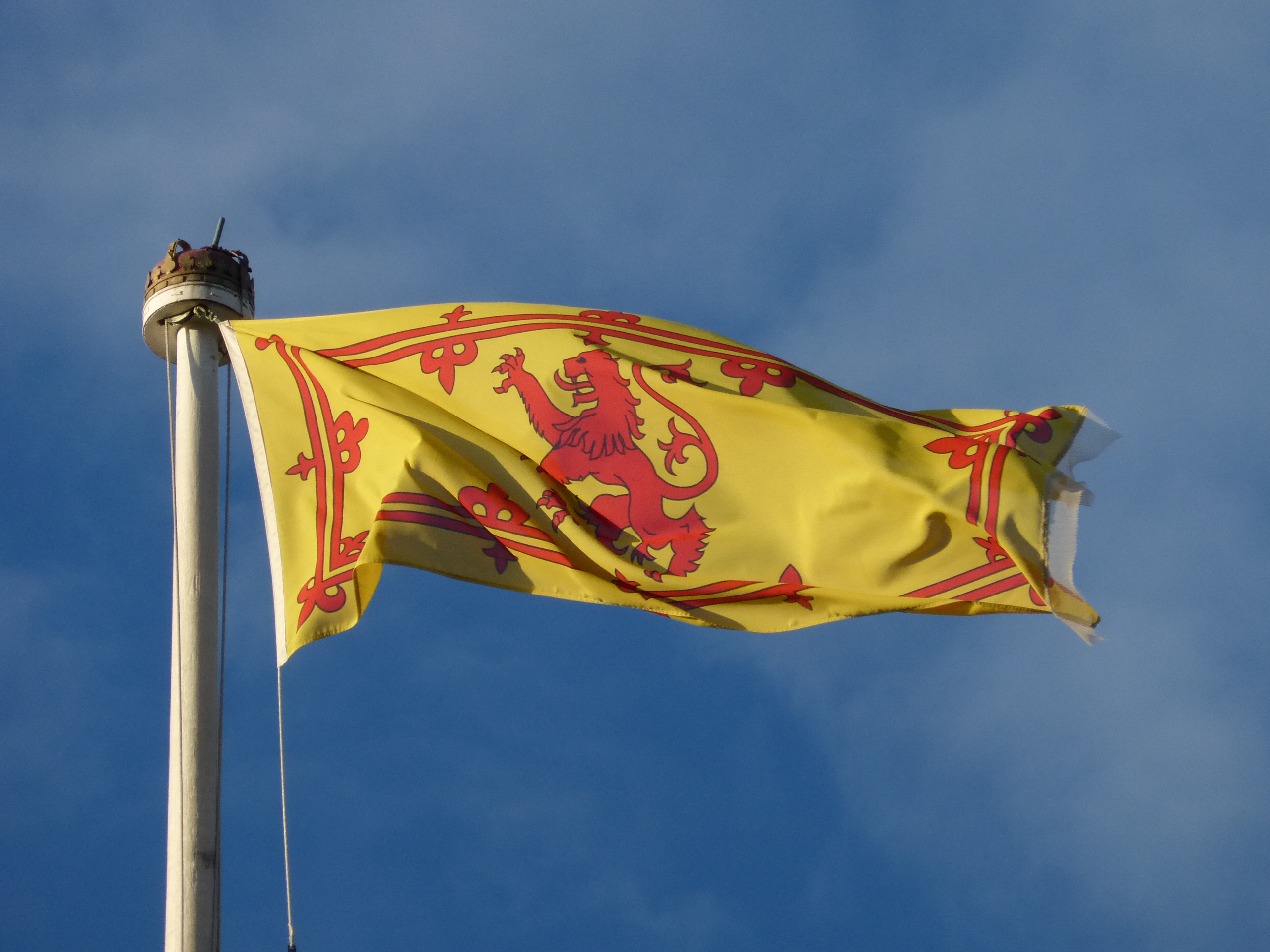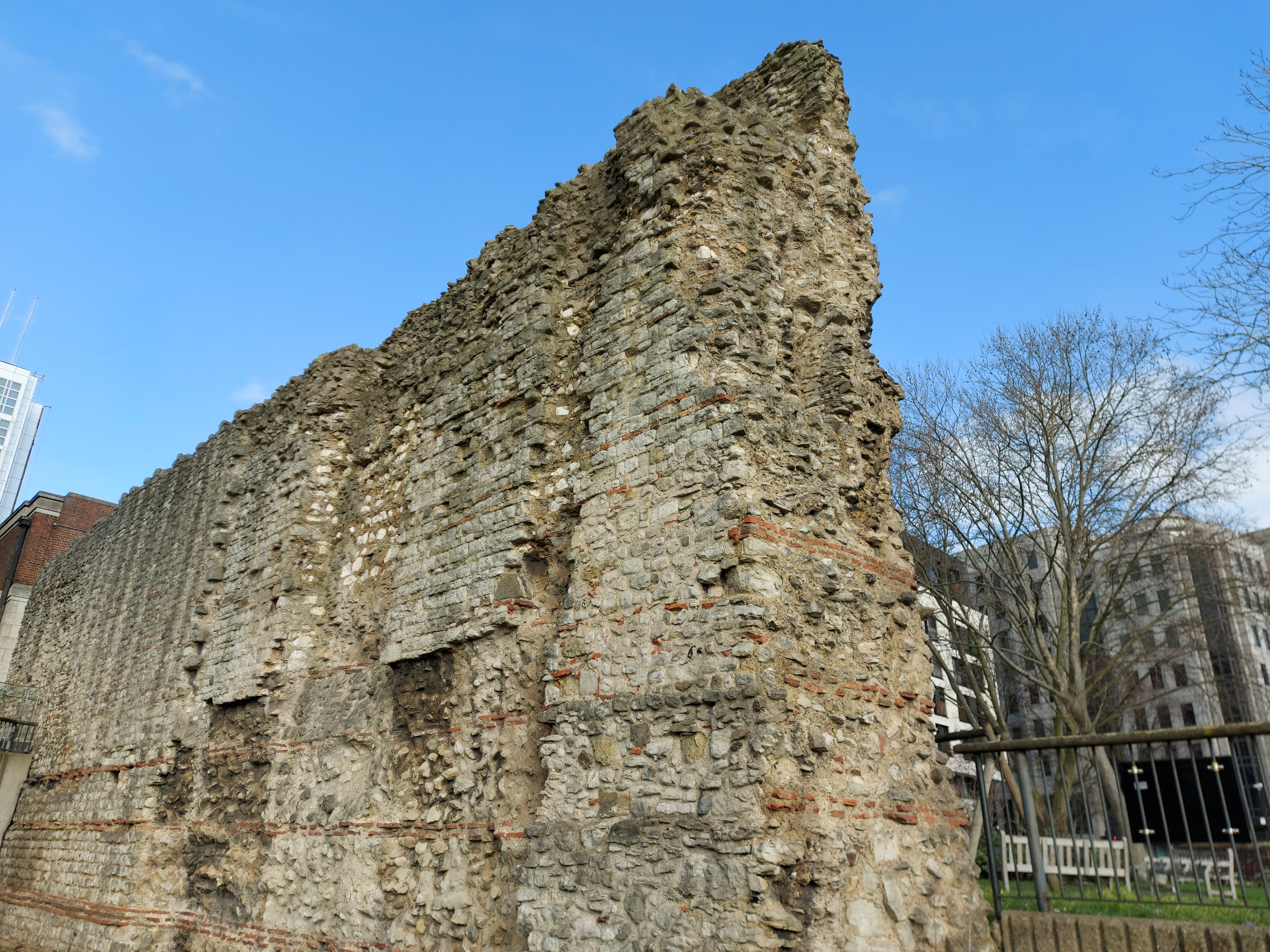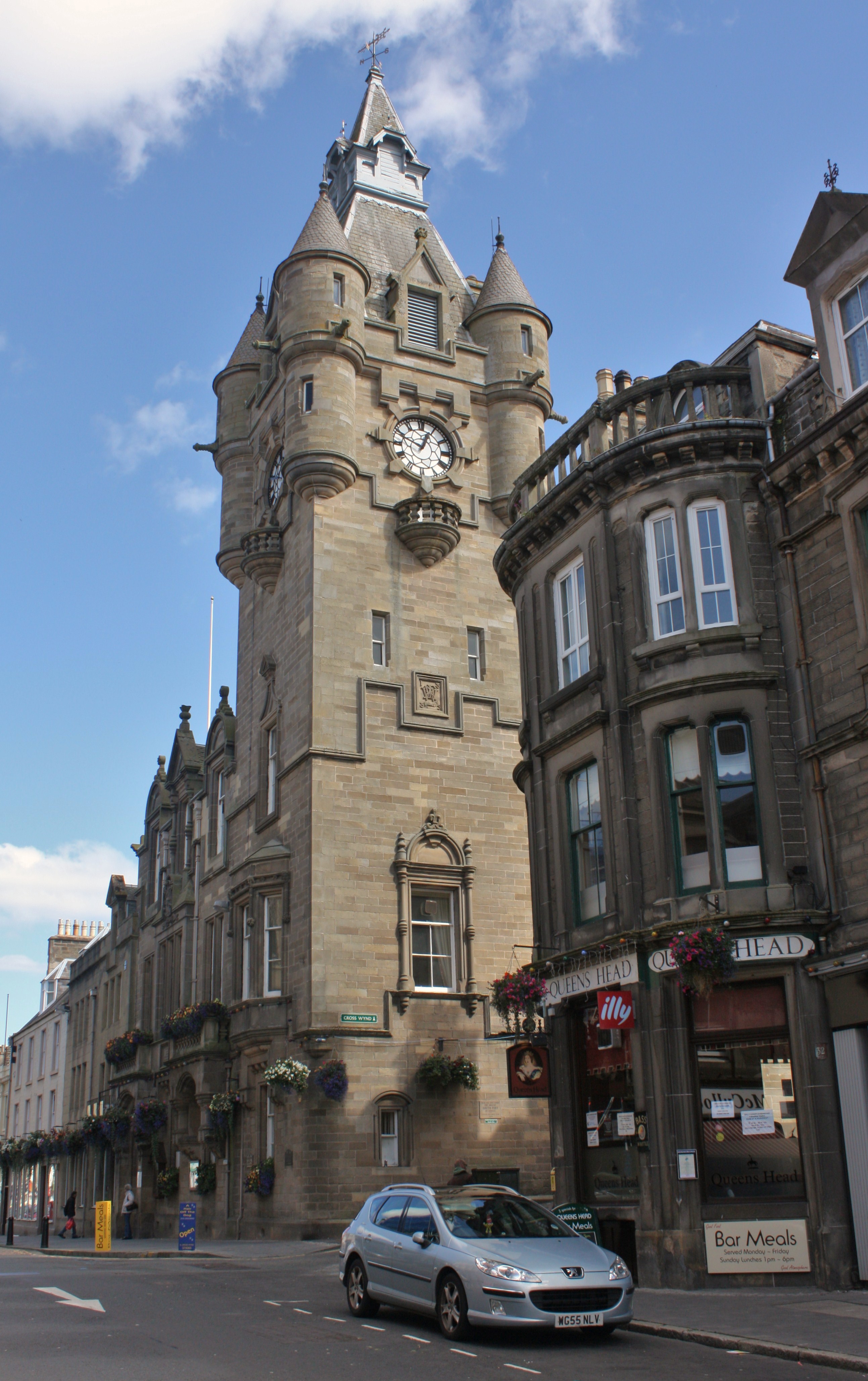|
William Gordon, 6th Viscount Of Kenmure
William Gordon, 6th Viscount of Kenmure and Lord Lochinvar (c. 167224 February 1716) was a Scottish Jacobite. William Gordon was the only son of Alexander Gordon, 5th Viscount of Kenmure of Kenmure Castle and succeeded his father on his death in 1698, but was not able to inherit his family's property until 1700, because of a protracted lawsuit. Not initially an active supporter of the exiled Stuarts, Lord Kenmure became the leader of the Lowlands nobles, who opposed the Act of Union in 1701. Absenting himself from parliament, early in Queen Anne's reign, the sixth Viscount Kenmure was deeply involved in plotting for a Jacobite rising and French invasion. Late in 1705, he was chosen by Lowlands Jacobites as a delegate to St Germain, although he did not travel there. Early in 1706 he claimed that disaffection was driving the Galloway Cameronians into Jacobitism. In 1707 he was one of the Jacobite peers for whose conduct David Murray, fifth Viscount Stormont, answered to Colon ... [...More Info...] [...Related Items...] OR: [Wikipedia] [Google] [Baidu] |
WILLIAM GORDON, 6th Viscount Kenmure (d
William is a male given name of Germanic origin.Hanks, Hardcastle and Hodges, ''Oxford Dictionary of First Names'', Oxford University Press, 2nd edition, , p. 276. It became very popular in the English language after the Norman conquest of England in 1066,All Things William"Meaning & Origin of the Name"/ref> and remained so throughout the Middle Ages and into the modern era. It is sometimes abbreviated "Wm." Shortened familiar versions in English include Will, Wills, Willy, Willie, Bill, and Billy. A common Irish form is Liam. Scottish diminutives include Wull, Willie or Wullie (as in Oor Wullie or the play ''Douglas''). Female forms are Willa, Willemina, Wilma and Wilhelmina. Etymology William is related to the given name ''Wilhelm'' (cf. Proto-Germanic ᚹᛁᛚᛃᚨᚺᛖᛚᛗᚨᛉ, ''*Wiljahelmaz'' > German ''Wilhelm'' and Old Norse ᚢᛁᛚᛋᛅᚼᛅᛚᛘᛅᛋ, ''Vilhjálmr''). By regular sound changes, the native, inherited English form of the name should b ... [...More Info...] [...Related Items...] OR: [Wikipedia] [Google] [Baidu] |
Royal Banner Of Scotland
The Royal Banner of the Royal Arms of Scotland, also known as the Royal Banner of Scotland, or more commonly the Lion Rampant of Scotland, and historically as the Royal Standard of Scotland, ( gd, Bratach rìoghail na h-Alba, sco, Ryal banner o Scotland) or Banner of the King of Scots, is the royal banner of Scotland, and historically, the royal standard of the Kingdom of Scotland. Used historically by the Scottish monarchs, the banner differs from Scotland's national flag, the Saltire, in that its correct use is restricted by an Act of the Parliament of Scotland to only a few Great Officers of State who officially represent the Monarchy in Scotland. pointing at thLyon King of Arms Act 1672, c. 47and thLyon King of Arms Act 1867, 30 & 31 Vict. c. 17/ref> It is also used in an official capacity at royal residences in Scotland when the Head of State is not present. The earliest recorded use of the Lion Rampant as a royal emblem in Scotland was by Alexander II in 1222; with the ... [...More Info...] [...Related Items...] OR: [Wikipedia] [Google] [Baidu] |
Act Of Parliament
Acts of Parliament, sometimes referred to as primary legislation, are texts of law passed by the Legislature, legislative body of a jurisdiction (often a parliament or council). In most countries with a parliamentary system of government, acts of parliament begin as a Bill (law), bill, which the legislature votes on. Depending on the structure of government, this text may then be subject to assent or approval from the Executive (government), executive branch. Bills A draft act of parliament is known as a Bill (proposed law), bill. In other words, a bill is a proposed law that needs to be discussed in the parliament before it can become a law. In territories with a Westminster system, most bills that have any possibility of becoming law are introduced into parliament by the government. This will usually happen following the publication of a "white paper", setting out the issues and the way in which the proposed new law is intended to deal with them. A bill may also be introduced in ... [...More Info...] [...Related Items...] OR: [Wikipedia] [Google] [Baidu] |
Tower Hill
Tower Hill is the area surrounding the Tower of London in the London Borough of Tower Hamlets. It is infamous for the public execution of high status prisoners from the late 14th to the mid 18th century. The execution site on the higher ground north-west of the Tower of London moat is now occupied by Trinity Square Gardens. Tower Hill rises from the north bank of the River Thames to reach a maximum height of 14.5 metres (48 ft) Ordnance Datum. The land was historically part of the Liberties of the Tower of London, an area the Tower authorities controlled to keep clear of any development which would reduce the defensibility of the Tower. Building has encroached to a degree, but a legacy of this control is that much of the hill is still open. The hill includes land on either side of the London Wall, a large remnant of which is visible. Definition Generally speaking, the name Tower Hill informally applies to those parts of the Liberties of the Tower of London, Tower ... [...More Info...] [...Related Items...] OR: [Wikipedia] [Google] [Baidu] |
Preston, Lancashire
Preston () is a city on the north bank of the River Ribble in Lancashire, England. The city is the administrative centre of the county of Lancashire and the wider City of Preston local government district. Preston and its surrounding district obtained city status in 2002, becoming England's 50th city in the 50th year of Queen Elizabeth II's reign. Preston has a population of 114,300, the City of Preston district 132,000 and the Preston Built-up Area 313,322. The Preston Travel To Work Area, in 2011, had a population of 420,661, compared with 354,000 in the previous census. Preston and its surrounding area have provided evidence of ancient Roman activity, largely in the form of a Roman road that led to a camp at Walton-le-Dale. The Angles established Preston; its name is derived from the Old English meaning "priest's settlement" and in the ''Domesday Book'' is recorded as "Prestune". In the Middle Ages, Preston was a parish and township in the hundred of Amounderness an ... [...More Info...] [...Related Items...] OR: [Wikipedia] [Google] [Baidu] |
Northumbria
la, Regnum Northanhymbrorum , conventional_long_name = Kingdom of Northumbria , common_name = Northumbria , status = State , status_text = Unified Anglian kingdom (before 876)North: Anglian kingdom (after 876)South: Danish kingdom (876–914)South: Norwegian kingdom (after 914) , life_span = 654–954 , flag_type = Oswald's Stripes, the provincial flag of Northumbria and red was previously purple , image_coat = , image_map = Map_of_the_Kingdom_of_Northumbria_around_700_AD.svg , image_map_size = 250 , image_map_caption = Northumbria around 700 AD , image_map2 = , image_map2_size = , image_map2_caption = , government_type = Monarchy , year_start = 653 , year_end = 954 , event_end = South is annexed by Kingdom of England , event1 = South is annexed by the Danelaw , date_even ... [...More Info...] [...Related Items...] OR: [Wikipedia] [Google] [Baidu] |
Mackintosh Of Borlum
The Mackintoshes of Borlum were a cadet branch of the Clan Mackintosh, a Scottish clan of the Scottish Highlands. Their most famous member was Brigadier William Mackintosh, Laird of Borlum (1658–1743) usually known as Mackintosh of Borlum who was a leader of the Jacobite rising of 1715. William Mackintosh, 1st of Borlum The Mackintosh of Borlum branch of Clan Mackintosh was founded by William Mackintosh, younger son of Lachlan Mor Mackintosh, 16th of Mackintosh (d.1606). William Mackintosh, 1st of Borlum married Beatrix, daughter of Innes of Innermarkie and had four sons: Lachlan, Robert, Angus and William. He died in 1630 aged 63. Lachlan Mackintosh, 2nd of Borlum Lachlan Mackintosh, 2nd of Borlum was a loyalist during the wars of James Graham, 1st Marquess of Montrose and was consequently fined £666 by the Committee of Process and Moneys. He married Helen Gordon and the Gordon Marquess of Huntly subsequently gave him a sasine of the town and lands of Ballidmor and other ... [...More Info...] [...Related Items...] OR: [Wikipedia] [Google] [Baidu] |
Kelso, Scottish Borders
Kelso ( sco, Kelsae gd, Cealsaidh) is a market town in the Scottish Borders area of Scotland. Within the boundaries of the historic county of Roxburghshire, it lies where the rivers Tweed and Teviot have their confluence. The town has a population of 5,639 according to the 2011 census and based on the 2010 definition of the locality. Kelso's main tourist draws are the ruined Kelso Abbey and Floors Castle. The latter is a house designed by William Adam which was completed in 1726. The Kelso Bridge was designed by John Rennie who later built London Bridge. Kelso held the UK record for the lowest January temperature at , from 1881 until 1982. History The town of Kelso came into being as a direct result of the creation of Kelso Abbey in 1128. The town's name stems from the earliest settlement having stood on a chalky outcrop, and the town was known as Calkou (or perhaps Calchfynydd) in those early days, something that is remembered in the modern street name, "Chalkheugh ... [...More Info...] [...Related Items...] OR: [Wikipedia] [Google] [Baidu] |
Cavalry
Historically, cavalry (from the French word ''cavalerie'', itself derived from "cheval" meaning "horse") are soldiers or warriors who fight mounted on horseback. Cavalry were the most mobile of the combat arms, operating as light cavalry in the roles of reconnaissance, screening, and skirmishing in many armies, or as heavy cavalry for decisive shock attacks in other armies. An individual soldier in the cavalry is known by a number of designations depending on era and tactics, such as cavalryman, horseman, trooper, cataphract, knight, hussar, uhlan, mamluk, cuirassier, lancer, dragoon, or horse archer. The designation of ''cavalry'' was not usually given to any military forces that used other animals for mounts, such as camels or elephants. Infantry who moved on horseback, but dismounted to fight on foot, were known in the early 17th to the early 18th century as '' dragoons'', a class of mounted infantry which in most armies later evolved into standard cavalry while ... [...More Info...] [...Related Items...] OR: [Wikipedia] [Google] [Baidu] |
James Radclyffe, 3rd Earl Of Derwentwater
James Radclyffe, 3rd Earl of Derwentwater (26 June 1689 – 24 February 1716) was an English Jacobite, executed for treason. Life Radclyffe was the son of Edward Radclyffe, 2nd Earl of Derwentwater and Lady Mary Tudor, the natural daughter of Charles II by Moll Davis. He was brought up at the exiled court of St Germain as a companion to the young prince, James Francis Edward Stuart (the 'Old Pretender' after his father James II died), and remained there at the wish of Queen Mary of Modena, until his father's death in 1705. He succeeded to the family titles and estates in Northumberland on the death of his father in 1705. After that, he travelled on the continent, sailed from Holland for London in November 1709, and then set out to visit his Cumberland estates for the first time early in 1710. He spent the next two years at Dilston Hall, Northumberland, the mansion built by his grandfather on the site of the ancestral home from 1521; the estates were sequestrated after the Ci ... [...More Info...] [...Related Items...] OR: [Wikipedia] [Google] [Baidu] |
Thomas Forster
Thomas Forster (1683 – October 1738), of Adderstone Hall, Northumberland, was an English landowner and Tory politician who sat in the House of Commons from 1708 to 1716. He served as a general of the Jacobite army in the 1715 Uprising and subsequently fled to France. Early life Forster was baptized on 29 March 1683, the eldest son of Thomas Forster (1659-1725) of Adderstone, MP for Northumberland from 1705 to 1708. His mother was Frances Forster, daughter of Sir William Forster of Bamburgh Castle. He was educated at Newcastle School, and was admitted at St John's College, Cambridge on 3 July 1700. In 1701, he inherited, with his aunt Dorothy Crew (wife of Lord Crew, Bishop of Durham) the estates of his uncle Ferdinando Forster, of Bamburgh and Blanchland. The estates had incurred substantial debts, and in 1704 the creditors instituted actions in Chancery to force the heirs to sell them. Career Forster was returned as Tory Member of Parliament (MP) for Northumbe ... [...More Info...] [...Related Items...] OR: [Wikipedia] [Google] [Baidu] |
Hawick
Hawick ( ; sco, Haaick; gd, Hamhaig) is a town in the Scottish Borders council area and historic county of Roxburghshire in the east Southern Uplands of Scotland. It is south-west of Jedburgh and south-south-east of Selkirk. It is one of the farthest towns from the sea in Scotland, in the heart of Teviotdale, and is the biggest town in the former county of Roxburghshire. The town is at the confluence of the Slitrig Water with the River Teviot. The town was formally established in the 16th century, but was previously the site of historic settlement going back hundreds of years. By the late 17th century, the town began to grow significantly, especially during the Industrial Revolution and Victorian era as a centre for the production of textiles, with a focus on knitting and weaving, involving materials such as tweed and cashmere. By the late 20th century, textile production had declined but the town remains an important regional centre for shopping, tourism and services. H ... [...More Info...] [...Related Items...] OR: [Wikipedia] [Google] [Baidu] |
%2C_Jacobite%2C_of_Kenmure_Castle.jpg)






